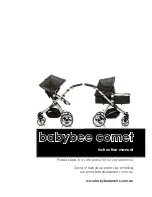
This device complies with Part 15 of the FCC Rules. Operation is subject to the following two conditions: (1) this device
may not cause harmful interference, and (2) this device must accept any interference received, including interference that
may cause undesired operation.
Note
This equipment has been tested and found to comply with the limits for a digital device, pursuant to Part 15 of the FCC
Rules. These limits are designed to provide reasonable protection against harmful interference in a residential installation.
This equipment generates, uses, and can radiate radio frequency energy and, if not installed and used in accordance with
the instructions, may cause harmful interference to radio communications. However, there is no guarantee that interference
will not occur in a particular installation. If this equipment does cause harmful interference to radio or television reception,
which can be determined by turning the equipment off and on, the user is encouraged to try to correct the interference by one
or more of the following measures:
•
Reorient or relocate the receiving antenna,
•
Increase the separation between the equipment and receiving module,
•
Connect the equipment into an outlet on a circuit different from that to which the receiving module is connected,
and/or
•
Consult the dealer or an experienced radio/TV technician for help.
on
p. 71. When integrated into OEM products, fixed antennas require installation preventing end-users from replacing them
with non-approved antennas. Antennas not listed in the tables must be tested to comply with FCC Section 15.203 (unique
antenna connectors), FCC Section 15.247 (emissions), and ISED RSS-Gen Section 6.8.
FCC and ISED Approved Antennas
WARNING: This equipment is approved only for mobile and base station transmitting devices. Antenna(s) used for this
transmitter must be installed to provide a separation distance of at least 20 cm from all persons and must not be collocated or
operating in conjunction with any other antenna or transmitter.
The radio transmitter modules DX80-2400 and SX243 have been approved by FCC and ISED Canada to operate with the
antenna types listed below, with the maximum permissible gain indicated. Antenna types not included in this list that have a
gain greater than the maximum gain indicated for any type listed are strictly prohibited for use with this device.
Table 30: Certified Antennas for 2.4 GHz
Model
Antenna Type
2.4 GHz Radio Module
Maximum Gain
Impedance
Integral antenna
DX80-2400
Unity gain
BWA-2O2-C
Omni, 1/2 wave dipole, Swivel
DX80-2400 or SX243
≤ 2 dBi
50 Ω
BWA-2O2-D
Omni, Dome, Box Mount
DX80-2400
≤ 2 dBi
50 Ω
BWA-2O2-E
Omni, 1/4 wave dipole, Swivel
DX80-2400
≤ 2 dBi
50 Ω
BWA-2O5-C
Omni, Collinear, Swivel
DX80-2400
≤ 5 dBi
50 Ω
BWA-2O5-MA
Omni, full-wave dipole, NMO
DX80-2400
≤ 4.5 dBi
50 Ω
BWA-2O6-A
Omni, Dome, Box Mount
DX80-2400
≤ 6 dBi
50 Ω
BWA-2O7-C
Omni, Coaxial Sleeve, Swivel
DX80-2400
≤ 7 dBi
50 Ω
11.10 Warnings
Install and properly ground a qualified surge suppressor when installing a remote antenna system.
Remote antenna
configurations installed without surge suppressors invalidate the manufacturer's warranty. Keep the ground wire as short as
possible and make all ground connections to a single-point ground system to ensure no ground loops are created. No surge
suppressor can absorb all lightning strikes; do not touch the Sure Cross
®
device or any equipment connected to the Sure
Cross device during a thunderstorm.
Exporting Sure Cross
®
Radios.
It is our intent to fully comply with all national and regional regulations regarding radio
frequency emissions.
Customers who want to re-export this product to a country other than that to which it was sold
must ensure the device is approved in the destination country.
The Sure Cross wireless products were certified for use
in these countries using the antenna that ships with the product. When using other antennas, verify you are not exceeding
the transmit power levels allowed by local governing agencies. This device has been designed to operate with the antennas
listed on Banner Engineering’s website and having a maximum gain of 9 dBm. Antennas not included in this list or having a
gain greater that 9 dBm are strictly prohibited for use with this device. The required antenna impedance is 50 ohms. To
reduce potential radio interference to other users, the antenna type and its gain should be so chosen such that the equivalent
Sure Cross
®
DXM700-Bx Wireless Controller
www.bannerengineering.com - Tel: + 1 888 373 6767
71



































